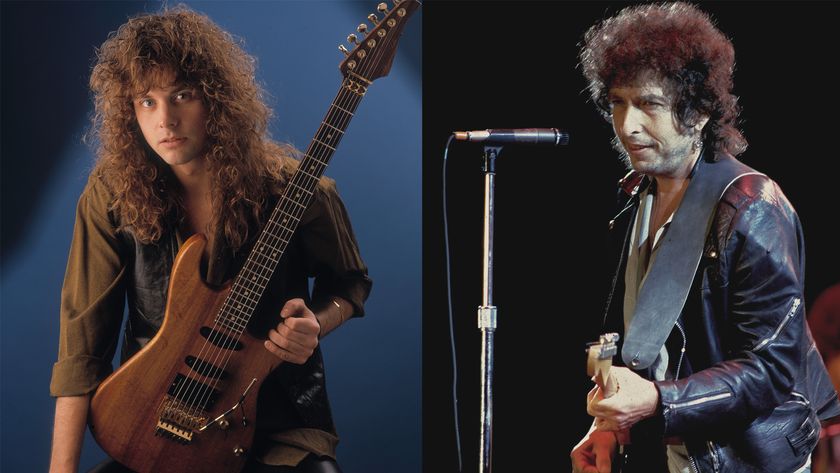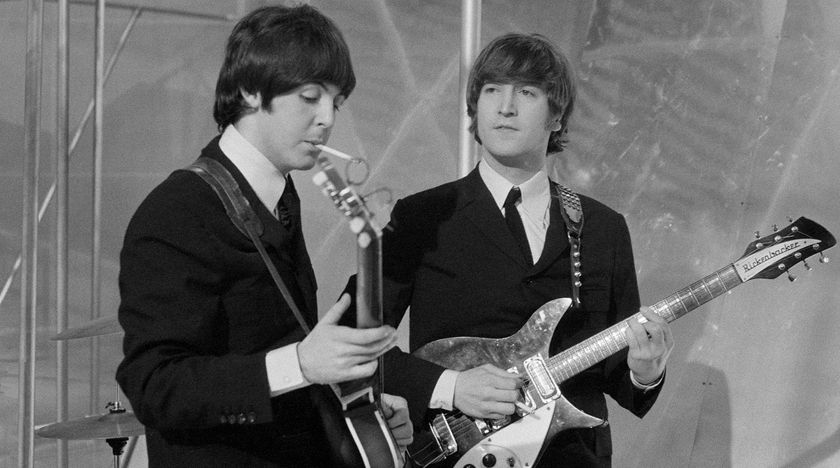"We had to say, 'Leave it alone! It's part of our sound.' Nobody understood what we were doing." Tony Iommi reveals how Black Sabbath fought power to get its signature heavy guitar tone on record
The band’s legendary debut album, released 55 years ago, defined the sound of heavy metal for decades to come

In February 1970, Tony Iommi and Black Sabbath changed the future of heavy music when they released their self-titled debut album. Armed with a 1965 Gibson SG Special and a slow, ominous take on the blues, Iommi brought a new flavor of guitar-driven music to the masses.
As Guitar Player's former music editor Jesse Gress once explained “Iommi recontextualized the same blues-based licks and riffs everyone else was playing at the time into a much darker and heavier oeuvre that soon became Sabbath’s calling card.”
But, as bassist Geezer Butler says, they weren’t straying from their blues roots.
“To me, we were always just a really heavy blues band,” he explains. “That’s all we were — an out-and-out 12-bar blues band. We just took these blues roots and made them heavier, because we were into Hendrix and Cream, who were the heaviest bands around at that time. We wanted to be heavier than everybody else!”
It was that quest that led them down a more extreme sonic path.
Black Sabbath opens with a dark and dreary riff that outlines the tritone, or devil’s interval, so called for its dissonance and ability to unsettle listeners. It adds a flattened fifth — a blue note — to a G octave, which is a standard blues move. But in this context, it takes on a whole other feeling.
“When I first played the riff to ‘Black Sabbath,' that set the standard for the rest of the album,” Iommi says. “When you heard those doomy guitar notes behind Ozzy, the hairs on your arms prickled. We knew it was good and different.”
Get The Pick Newsletter
All the latest guitar news, interviews, lessons, reviews, deals and more, direct to your inbox!
The band recorded live, tracking the entire album in a day. But while the production was fast, it wasn't easy to convinced producer Rodger Bain of the importance of Geezer Butler's bass tone.
“The biggest problem we’ve had is explaining to the people who recorded us how we have our sound set up,” Iommi explains. “My guitar and Geezer’s bass have to very much agree with each other, to make the wall of sound.
“All of them just see a bass as a bass; clean and neat. But Geezer’s sound is more crunchy, more raw, and he sustains stuff and bends notes the same as the guitar, to make it fatter. Some of them would try to get him to take the distortion away, and it would be like ‘Fucking leave it! It’s a part of our sound!’”
Undoubtedly, Iommi needed Butler's low-end assistance due to the accident he suffered aged 17 while working in a metal shop. It cost him the guitarist the tips of the middle and ring fingers on his fretting hand. He was encouraged to continue to play after he heard about Django Reinhardt’s handicap after an accident burned the fourth and fifth fingers of his fretthing hand, forcing him to rethink his approach to guitar. .
As you might expect, creating music so different from what was standard at the time didn't make Black Sabbath an instant success, not even in Birmingham, England, the band's hometown.
“Birmingham didn’t want to know us," Iommi toldThe Telegraph in 2023. "We got slammed by the press. In America, they called us Satanists. Nobody understood what we were doing, because it was so different.
“When we started, there was no template for heavy metal,” he adds. “We didn’t even call it that. We liked blues, jazz, dramatic horror movie scores, even a bit of classical, [Gustav] Holst’s ‘Mars’, when it gets really dum-diddly-dum, I love all of that.”
As the band progressed, Iommi continued to push the heavy metal template to new reaches. On "Iron Man," the Sabbath song Iommi says he relates to the most, he dove deeper into the band’s horror-film pastiche, painting gruesome pictures from the sounds that came out of his Laney amps.
“I was in a rehearsal room and Bill started playing this boom, boom, boom,” he remembers. “I just saw this thing in my mind of someone creeping up on you, and it just sounded like the riff.”
A year later, on Master of Reality, he downtuned his guitar to C#, F#, B, E, G#, C#, which gives ‘Into The Void’ its guttural punch. That directly inspired Eddie Van Halen , and set the ball rolling for the current metal trend of downtuning and using extended-range guitars.
A freelance writer with a penchant for music that gets weird, Phil is a regular contributor to Prog, Guitar World, and Total Guitar magazines and is especially keen on shining a light on unknown artists. Outside of the journalism realm, you can find him writing angular riffs in progressive metal band, Prognosis, in which he slings an 8-string Strandberg Boden Original, churning that low string through a variety of tunings. He's also a published author and is currently penning his debut novel which chucks fantasy, mythology and humanity into a great big melting pot.

"Shane called me and said, 'The guitar is here. It plays amazing. It's providence calling!’” How an extremely rare goldtop 1958 Les Paul Standard found its way into the hands of Imagine Dragons guitarist Wayne Sermon

“A lot of Who fans would be really pleased.” Pete Townshend ponders using AI to re-create his ‘70s heyday for fans who prefer the Who's classic songs









